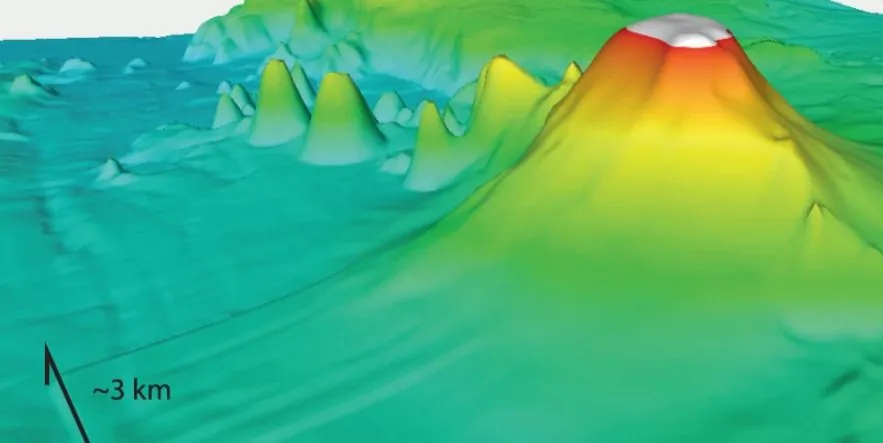New study explains how Kolumbo volcano’s eruption led to destructive tsunami in 1650

A study published in Nature on October 26, 2023, detailed the complex mechanisms behind the 1650 volcanic eruption of Kolumbo in the Aegean Sea, which led to a devastating tsunami. Using advanced 3D seismic data and numerical simulations, the researchers identified a sequence of a landslide followed by an explosive eruption as the key events.
The study, led by Dr. Jens Karstens from the GEOMAR Helmholtz Centre for Ocean Research Kiel, employed advanced three-dimensional seismic methods to create an in-depth image of the now-submerged Kolumbo crater. The data revealed a significant displacement of approximately 1.2 km³ (0.3 mi3) of Kolumbo’s northwestern flank, which moved 500 – 1 000 m (1 640 – 3 280 feet) downslope. This movement was found to be consistent with the depressurization of the magma-feeding system, leading to a catastrophic explosion.
Eyewitness accounts from the late summer of 1650 described a series of alarming events: changes in water color, boiling water, and fire and lightning visible from the Greek island of Santorini. Seven km (4.3 miles) NE of Santorini, Kolumbo had erupted, ejecting glowing rocks and causing water to suddenly recede before surging towards the coastline with waves reaching up to 20 m (65.6 feet) in height. These waves were accompanied by a loud bang heard over 100 km away, along with falling pumice and ash on surrounding islands.
Numerical simulations conducted as part of the study indicated that only a sequence involving both flank movement and an explosive eruption could explain these historical accounts. A single explosive eruption would have generated waves of only about 6 m (19.7 feet) at a particular location, contrasting with the eyewitness reports of 20 m high waves. Moreover, while the explosion alone would have led to a wave crest reaching the coast first, the inclusion of the landslide in the simulations showed the sea receding initially, aligning with historical observations.
The crater itself was discovered to be 2.5 km (1.55 miles) in diameter and 500 m (1 640.4 feet) deep, indicative of a massive explosion. Dr. Gareth Crutchley, co-author of the study, noted that one flank of the volcanic cone had been significantly deformed, affirming, “This part of the volcano has certainly slipped.”
By comparing various mechanisms that could have led to the tsunami with historical accounts, the researchers concluded that a combination of a landslide followed by a volcanic explosion was the most plausible explanation. The flank slippage acted like “uncorking a bottle of champagne,” releasing pressure from the magma chamber and triggering a massive explosion, according to Dr. Jens Karstens.
The study’s implications extend beyond historical reconstruction. It provides vital insights for the development of real-time monitoring programs for active submarine volcanic activities, such as SANTORY, led by co-author Prof. Dr. Paraskevi Nomikou of the National and Kapodistrian University of Athens (NKUA).
References:
1 Mystery of volcanic tsunami solved after 373 years – Helmholtz Association of German Research Centres – October 26, 2023
2 Cascading events during the 1650 tsunamigenic eruption of Kolumbo volcano – Karstens et al. – Nature – October 26, 2023 – https://doi.org/10.1038/s41467-023-42261-y – OPEN ACCESS
Featured image credit: Nature/Authors

Commenting rules and guidelines
We value the thoughts and opinions of our readers and welcome healthy discussions on our website. In order to maintain a respectful and positive community, we ask that all commenters follow these rules.